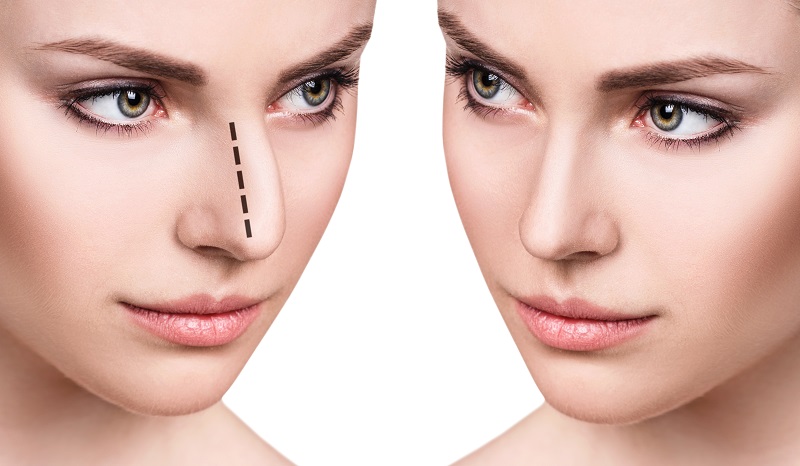Rhinoplasties
How Quick is the Recovery Process for Rhinoplasties?| Team info | |
|---|---|
| Description |  Rhinoplasty has become one of the most requested cosmetic surgeries in the U.S., with thousands opting for the procedure each year to improve nasal function or reshape the nose. Despite its popularity, many patients still feel unsure about the recovery timeline and what to expect after surgery. Recovery speed can vary, but there's a general arc most patients follow. Some clinics even claim to be the best rhinoplasty surgeon in Denver, drawing patients who want both expertise and a clearer healing process. What Happens Right After Surgery? Immediately following the procedure, patients usually spend a few hours in a recovery room while the anesthesia wears off. Most return home the same day. It’s common to feel groggy, and mild nausea isn’t unusual. The nose is packed or splinted to maintain its new shape, and there’s often some bruising around the eyes. The first 24 to 48 hours are typically the most uncomfortable. Pain is usually manageable with prescribed medication, but it's important to rest, stay hydrated, and avoid unnecessary movement. Keeping the head elevated can significantly reduce swelling. Week One: Visible Swelling and Bruising By day three or four, most patients experience peak swelling. Eyes can look bruised, and the nose may appear wider or more upturned than expected. This stage causes the most concern for patients who aren’t prepared for it. However, it’s a normal part of the healing process. Stitches and splints are typically removed after 5 to 7 days, which can provide a lot of relief. Once the splint comes off, people often get their first glimpse of the new nose. It’s not the final result, not even close, but it gives a general idea of the outcome. Many patients feel self-conscious during this phase, especially when the bruising and swelling haven’t fully gone down. It helps to plan ahead and clear your calendar of any major social events during the first ten days. If you’re working remotely, consider adjusting your camera angle or using a blurred background to feel more confident in virtual meetings. A little planning can go a long way toward reducing stress and giving yourself the space to heal without added pressure. Weeks 2–4: Major Changes Start Settling A study found that rhinoplasty patients were able to resume most routine daily activities within 4.1 days post-surgery, showing that for many folks life starts feeling normal again quicker than expected. During this period, bruising around the eyes fades, and swelling starts to go down noticeably. By the end of week two, many people feel comfortable enough to return to work or school, provided their job doesn’t require strenuous activity. Nasal breathing can still feel a bit off during this stage. Some internal swelling remains, which affects airflow. Still, most patients notice improvement each day. Light exercise can often be resumed around the three-week mark, but always follow your surgeon’s instructions. Overdoing it early on can lead to setbacks. Months 1–3: Subtle Refinement Phase During this phase, swelling continues to fade, especially around the nasal bridge. The tip of the nose, which holds onto swelling the longest, will gradually soften and settle into its final shape. Makeup can typically be worn safely by the one‑month mark, though many wait longer to apply anything near the incision sites. By three months, most casual observers won’t notice anything unusual. However, patients are often still aware of changes taking place under the surface. While you might look "normal" to others, it’s important to remember the healing isn’t over. Cartilage, skin, and bone are still adapting. One Year: The Finish Line It often surprises people that final results from rhinoplasty take this long, but the nose is a delicate structure. Even small alterations require time to fully refine. By the 12‑month mark, residual swelling (particularly at the tip) will have subsided for most people. Results vary based on skin thickness, surgical technique, and individual healing. Thicker skin can mean a longer refinement process, especially around the tip. Revision rhinoplasties also take longer to heal than first-time procedures. Tips to Support Your Healing While you can’t force your body to heal faster, you can support it: - Follow all post‑op instructions carefully - Avoid touching or bumping your nose - Sleep with your head elevated for at least the first few weeks - Eat a nutrient‑rich diet with plenty of hydration - Don’t smoke or vape during recovery - Protect your nose from sun exposure, which can worsen swelling and discoloration Wearing glasses may also need to be avoided for several weeks, depending on your surgeon’s guidelines. Pressure from frames can interfere with the nasal bridge’s healing. Emotional Recovery is Real Too No one talks about this enough, the emotional side of recovery can catch people off‑guard. Swelling, bruising, and a nose that doesn’t yet look "done" can cause anxiety or even regret during early recovery. This is especially common during the first two weeks. It’s worth noting that patient satisfaction and quality of life generally improve significantly by six months post-surgery, according to several validated outcome studies . But those early weeks can test your patience. Having realistic expectations and staying in touch with your surgeon can help. Many offer follow-up appointments throughout the first year to monitor progress and provide reassurance. When to Call Your Surgeon While mild discomfort is expected, certain symptoms require prompt attention: - Persistent bleeding - High fever or chills - Excessive pain unrelieved by medication - Redness, pus, or foul odor around incisions - Sudden increase in swelling after initial improvement Most complications are rare, but they’re easier to manage when caught early. The Takeaway Rhinoplasty recovery isn’t as intimidating as it sounds, but it does take time. Most patients return to routine within days, look visibly normal within weeks, and enjoy final results within up to a year. Patience, proper aftercare, and realistic expectations are key. Choosing an experienced surgeon who guides you through each stage makes a big difference, not just during the operation, but throughout recovery. Isn’t it amazing how a little support and letting your body do its job can lead to such lasting change? |
| Created | 13 Sep 2011 |
| Web site | http://boinc.gremlins.es |
| Total credit | 6,300 |
| Recent average credit | 0 |
| Cross-project stats | SETIBZH Free-DC BOINCstats.com |
| Country | Spain |
| Type | National |
| Members | |
| Founder | Rosarito Soby |
| New members in last day | 0 |
| Total members | 0 (view) |
| Active members | 0 (view) |
| Members with credit | 0 (view) |
Copyright © 2025 Arizona State University